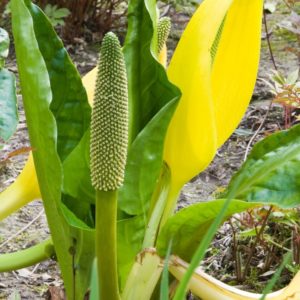What is an Invasive Non-Native Species?
Some species have been introduced into the UK deliberately for use in forestry or agriculture, and others have arrived as a result of human activity via the transport of goods, in ships’ ballast water or brought in by botanists and explorers. It’s currently estimated that Britain has more than 3,000 non-native species. Many are harmless, but occasionally a species will be introduced that can spread and cause significant damage to our economy, health and natural world – these are Invasive Non-Native Species (INNS).
What is the legal situation?
UK Government legislation is as follows: You must not plant in the wild, or cause to grow in the wild, listed plants which are either non-native, or invasive non-native. This can include moving contaminated soil or plant cuttings. If you do, you can be fined or sent to prison for up to 2 years.
You must not import, transport, keep, breed, sell, use or exchange, grow or cultivate, or release into the environment species of invasive non-native (alien) plants. This can include intentionally moving contaminated soil or plant cuttings. If you do, you can be fined or sent to prison for up to 2 years.
You do not have to remove these plants or control them on your land, but if you allow Japanese knotweed to grow on anyone else’s property you could be prosecuted or given a community protection notice for causing a nuisance. If you allow it to spread into the wild you could be fined up to £5,000 or be sent to prison for up to 2 years.
Which species are the AONB focussing on?
We’re currently targeting Japanese Knotweed, American Skunk Cabbage and Himalayan Balsam. It’s believed these were introduced as exotic garden plants and, finding our temperate climate favourable, they spread out into the countryside via watercourses and other means. Sale of Himalayan Balsam and Japanese Knotweed is banned and both are listed under Section 9, Wildlife & Countryside Act 1981 and categorised as controlled waste. American Skunk Cabbage is found across the UK, in fairly localised areas, but it is spreading.
In 2021 we received a number of records for Himalayan Knotweed around the lower Wye Valley. We are currently reviewing the guidance for this species and assessing adding this new species to our treatment schedule for 2022. We are also starting to assess the extent of Cherry laurel and Rhododendron ponticum and will be carrying out control work starting with some protected areas such as Sites of Special Scientific Interest (SSSI) and nature reserves.
What is actually happening?
The Wye Valley Area of Outstanding Natural Beauty (AONB) team has been actively helping landowners tackle INNS in the lower Wye Valley for the past 4 years. We are careful to stress that we are helping, assisting or supporting, because ultimately the responsibility to stop the spread of invasive species onto neighbouring land lies with the landowner or resident.
Currently Japanese knotweed and American Skunk Cabbage treatment are proving manageable in targeted areas within the current level of resources. We’ve been working very closely with our local communities, tapping into the wealth of local knowledge to map locations of these plants on our geographic information system (GIS) once they’ve been ground-truthed, and to gain landowner consent for access and treatment. We then share this information with specialist contractors who carry out the appropriate treatment.
As result of our increasing knowledge of the distribution of the knotweed and skunk cabbage, and by securing further funding we have been able to scale up the treatment from around 60 Japanese knotweed sites and 1 American Skunk Cabbage site in 2019 to working across 17 local communities, treating around 165 sites in 2021.
Supporting Local Action Groups in tackling Himalayan balsam
Himalayan Balsam is widespread across the wider Wye catchment, necessitating a wholly different approach to our other target species; a catchment-wide, community-led approach, working from the headwaters to the sea to reduce the risk of reinfestation. The AONB boundary stops south of Hereford and we do not have the resource to coordinate at scale, so we are focusing effort effectively at a local sub-catchment scale.
Piloting this approach for us is the Local Action Group, The Narth & District Footpath Group. In 2019 they mapped the extent of balsam across the Manor Brook catchment and have been strategically removing balsam, working from the upper catchment downstream. Their work through 2019 is estimated to have removed up to 90% of the balsam at 11 sites. In 2020 the group removed the remaining 10% and they’ve tackled a new area, removing over 5,500 plants! It certainly proves ‘where there is a will, there is a way’ and we are keen to roll out this model in further sub-catchments when Covid-19 restrictions and funding allow. Both Llandogo and Brockweir communities are currently setting up Local Action Groups with the aim to start controlling it next year and we will support them as much as we can.
Just imagine, if all of the communities in the River Wye catchment mobilised in the same way, Himalayan balsam could be brought into a manageable state in under 3 years! For information on how to set up a Local Action Group do get in touch and visit the GB NNSS Website where they have a Community Toolkit and a host of vital information.
Why only specific areas / why not our area?
The scope of our work is dictated by funding. For example, Environment Agency funding can only be spent on the English side of the AONB and Welsh Government funding can only be spent, obviously, in Wales. The issues affecting our rivers clearly don’t slot neatly into administrative boundaries, but we must abide by funding rules, spend funding as strategically as possible and prioritise work that will bring the best outcomes.
Having said that, if your community is within the lower Wye Valley AONB and has any Japanese Knotweed or American Skunk Cabbage present please do get in touch at projects@wyevalleyaonb.org.uk. Your information will help us to continue to increase our knowledge of their extent and help us target resources over the coming years.
We are currently targeting INNS in 17 different communities: Monmouth (River Wye), Lydbrook, Staunton, Coleford, Newland, Redbrook, Penallt, Bigsweir, Maryland, Whitebrook, Cleddon, Llandogo, Hewelsfield Common, Brockweir, The Cot, Tintern, Barbadoes Hill.
How do you treat these INNS?
We’d much rather chemicals were not used, especially in such sensitive environments, but we’re dealing with some very tough contenders and, in the case of Japanese knotweed, nothing else has been found to work as effectively as the professional systemic, broad-spectrum glyphosate-based herbicide Roundup.
Since these INNS tend to grow in or near water, only suitably qualified people with a special permit can undertake the treatment. Our contractors are experienced in risk assessment, biosecurity and good working practice. We only employ local contractors who will have a vested interest in their local area, so we can be assured they will have due regard.
We follow proven Good Management Guidance for each species, developed by RAPID:
As an extra layer of quality control, consent must be sought from Natural England or Natural Resources Wales before work takes place on the banks of the Wye, because it is designated as a Site of Special Scientific Interest (SSSI) and Special Area of Conservation (SAC).
Can I deal with these INNS myself?
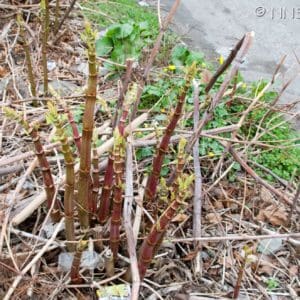
There is a lot of guidance online on how to deal with these species and what not to do. We’ve listed some of those resources below, and here’s a quick summary:
Japanese Knotweed
Please do not attempt to cut, strim or mow Japanese knotweed as it increases the risk of spreading the plant and could constitute an offence. Repeatedly cutting with a mower will not kill it, the plant will simply re-grow from the root, and you will spread the plant to your grass cuttings site – it only takes a discarded 2cm piece of root to start a new plant. Attempts at digging the plant out should also be avoided as the surrounding area will be contaminated with the roots and disturbance can stimulate the rhizome to grow. Japanese Knotweed is classed as a Controlled Waste so it is illegal to dispose of it other than at a registered waste site. It should never be composted, it can survive burning and burying it requires a licence and the hole needs to be over 5 meters deep. So, before you try any knotweed control method please do contact us to find out if we can add it to our schedule of treatment. If we can, then the best course of action is to let it grow and flower so that it can be treated with maximum effect.
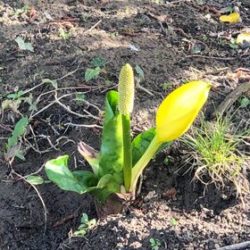

American skunk cabbage
You can reduce the risk of spread of your American skunk cabbage by cutting the yellow flowers off in the spring before it sets seed, and if you only have a few plants and are meticulous in digging out all the rhizome, then you can eradicate it yourself. Care is needed to collect all plant matter and it must be destroyed through burning, drying out (away from watercourses) or secure composting. It’s not yet categorised as a Controlled Waste but there are campaigns to change that. Where the spread is extensive then specialist treatment with a herbicide will be needed.
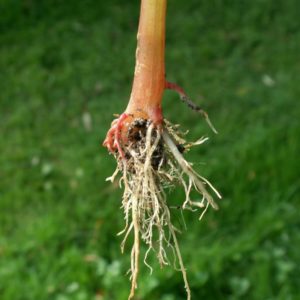

Himalayan Balsam
Himalayan balsam can be gently pulled up by hand with its roots intact and it’s good practice to snap the stem between the roots and the first node. Ideally it should be done before it flowers – the seeds are categorised as a Controlled Waste. You can compost it as long as there are no flowers and seeds present and it breaks down quickly. Regular trimming or slashing of balsam is also effective in weakening the plants and it will eventually die off. Grazing balsam areas is also effective in keeping it at bay. If the balsam is flowering, then it must be either burnt on site or taken to a registered waste centre.
You’ve treated this before. Why isn’t it working?
When it comes to Japanese Knotweed there is no quick solution and it may take between 2 to 5 treatments over as many years until complete dieback and destruction of the rhizome is achieved. Some sites in Tintern are now on their 4th year of treatment.
We’re trialling treatment for American Skunk Cabbage and will continue to monitor for regrowth to see if modifications are needed to improve success rate. However, because the adult plants have been allowed to go to seed at many sites for many years, it’s likely we’ll see skunk cabbage along our watercourses for a number of years to come – a large seed bank can build up in the soil and can remain viable for around 8-9 years, so control is a lengthy and ongoing process. Thankfully the plant is slow growing and only plants of 3 years+ produce flowers and seeds.
Himalayan balsam seeds are viable in the soil for up to 2 years, plus seeds are readily transported via water, animals and humans, so reinfestation is a distinct possibility. This is why, once a community has it under control it’s important to keep on top of it.
The plant has disappeared after treatment. Why do you want to visit the site again?
It is so important to carry out follow-up work to ensure the invasive plant has been treated successfully. If it has been killed off we can log it on our system as ‘absent’. However, with Japanese knotweed, the plant can often look as though it has been killed off, when actually those rhizomes under the ground have still got a lot of life in them and they often reshoot in a slightly different place (remember the roots can stretch 7 meters in all directions). American skunk cabbage can also reshoot from small pieces of root if digging failed to remove all root matter and those seeds are viable for up to 8 years so the site is likely to be host to more cabbages in the coming years. Follow-up work is also vital in Himalayan balsam pulling work – pulling ideally needs to take place at the same site two or even three times in a year.
How will it be treated and how will we know it’s treated?
Chemical control is best carried out on a calm, cool, dry day. For the riverside reaches around Tintern and up to Bigsweir, spraying must also be avoided during the spring tides. For these reasons we can’t give a specific date or time for treatment and we need to be able to keep it flexible. We use social media to keep communities informed of pending and current treatment and will keep landowners informed via email and phone as much as we can.
Our contractors operate discretely and are in and out of a site as quickly as possible. The Roundup is harmless once it has dried on the leaves, however its likely you won’t see die-back for a number of weeks.
How will you ensure Covid-19 guidance is adhered to when visiting my property?
The requirements when using glyphosate are more strict than Covid-19 guidance – full Personal Protective Equipment (PPE) must be worn and treatment is carried out when the site is clear of people and animals.
Will we ever be rid of these INNS? It seems a lost cause.
Despite the mounting threats and costs of controlling INNS, there’s still a lack of coordination around INNS at national level and a lack of long-term planning and investment. Across the country, funding for INNS projects is ad hoc and short-term, and in the Wye Valley AONB we have the added complication of joining up project funds for WISP across the England-Wales border! With the declaration of a climate emergency and the obvious need for resources to be targeted at nature recovery, we remain hopeful this will become easier.
To help to inform and assist those who are setting up regional or national level strategies we share our experience and our records with our government agencies, county councils and our Local Environment Record Centres (LERCs). We are also working closely with Wales Resilient Ecological Network (WaREN).
For as long as they are present and we can secure the funding, the Wye Valley AONB Team will continue to strategically tackle these invasives in the lower Wye Valley. Our partner the Wye and Usk Foundation has successfully eradicated Giant Hogweed from the Wye; a fantastic achievement. Japanese Knotweed is getting less year on year, we’ve identified and have treated skunk cabbage across 3 sub-catchments now, and we’re looking at broadening our community work around Himalayan balsam, because we all know we stand the best chance of stopping the spread if we work together. We cannot afford to sit back and watch these species run rampant and decimate what little biodiversity we do have left.
The WISP Frequently Asked Questions can be downloaded here: WISP FAQs
GB Non-Native Species Secretariat Home Page: GB non-native species secretariat (nonnativespecies.org)
GB Non-Native Species Secretariat: ‘Be Plant Wise’ http://www.nonnativespecies.org/beplantwise/
National Biodiversity Network INNS Portal: NBN Atlas Wales INNS
iRecord – In addition to reporting your sighting to us at the Wye Valley AONB, you can also report it via iRecord – a central hub where wildlife records are made available to support research and decision-making at local and national levels.
Setting up a Local Action Group can be a daunting prospect, but there are a number of tools available to help. Plus, we are very happy to talk this through with you and can put you in touch with existing local groups who have already gone through the process.
Japanese knotweed
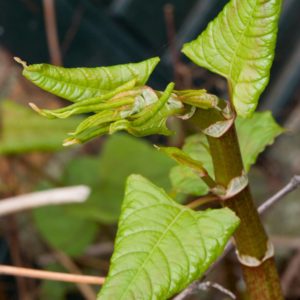

Himalayan balsam
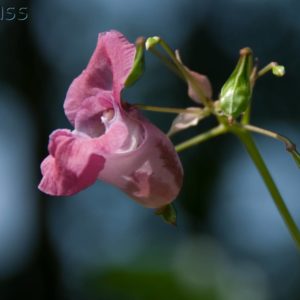

Himalayan Balsam: plantlife.org.uk/himalayan-balsam
Himalayan Balsam: himalayan-balsam-controlling-it-on-your-land (gov.wales)
American skunk cabbage
